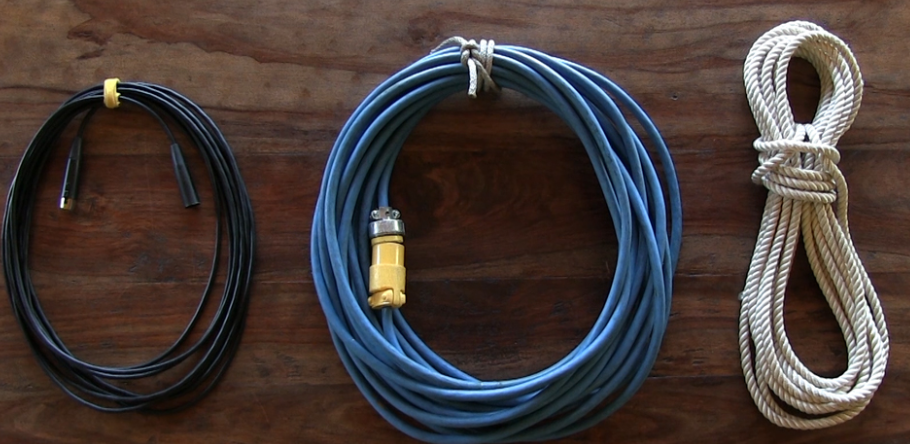
Polyamide ropes are a type of rope made from synthetic resin. They come in a variety of colors and are often used as climbing ropes, lines, or cables. What is Polyamide rope? A polyamide is a type of synthetic polymer that is derived from the amino acids arginine, lysine, and glycine. Polyamides are strong yet flexible materials that can be made into ropes, cables, and other types of fibers. What is a Synthetic Rope? A synthetic rope is a rope that is manufactured using synthetic polymers. This means that the rope does not contain any natural fibers or fibers from plants. Instead, the rope is made from synthetic materials.
What is Polyamide and What Does it Do?
Polyamide rope is a type of synthetic rope and cable made from multiple polyamide filaments. These filaments are twisted together to create the rope’s core, and then the rope is coiled up into a cable. The properties of polyamide ropes make them ideal for a variety of applications, including marine, civil engineering, and manufacturing.
The main advantages of using polyamide ropes over traditional materials are their strength and flexibility. Polyamide ropes can withstand high loads and resist distortion due to strain or tension. They also remain flexible even when they’re wet or icy, making them well-suited for applications in cold environments.
Some of the other benefits of using polyamide ropes include their low environmental impact, resistance to corrosion, and low cost. These factors make polyamide ropes an excellent choice for a variety of applications.
How to Tell If a Rope Is Made of Polyamide
Polyamide rope is a type of rope made from a polymer blend. Polyamide ropes are durable and can handle a lot of stress, making them ideal for use in various applications. There are several ways to tell if a rope is made of polyamide. Some key signs include the presence of both nylon and polyamide fibers, as well as the absence of fiberglass or other fiber types.
Ropes vs. Cables: Which is Better for Climbing?

A polyamide rope is a kind of climbing rope made from multiple strands of synthetic fiber. Polyamides are stronger than other ropes and are also resistant to rot and abrasion. They make good ropes for indoor climbing because they don’t stretch as much as other types of ropes and hall anchors.
Cables have been the standard rope type for rock climbers for decades. Cables are composed of many thin, strong fibers that are twisted together to form a cable. This makes them strong and flexible, which is why they’re ideal for climbs that involve big jumps or steep ascents and descents.
There are pros and cons to each type of rope. A polyamide rope is generally stronger than a cable, but it can be less stretchy, which may be an issue if you’re looking to do some long rappels or use the rope extensively in a variety of positions. Cables also tend to last longer than polyamides when used correctly, making them a more reliable option if you plan on using your rope often.
When to Use a Polyamide Rope
A polyamide rope is a type of rope made out of a polymer chain. Polyamides are a family of synthetic polymers that are often used to make ropes because they are strong, flexible, and resistant to corrosion. Polyamides have many commercial uses, including filaments for fabrics, wire ropes, and cable ties.
Polyamide ropes can be used in a number of applications where other ropes wouldn’t be suitable, such as in maritime environments. They are also popular for use in climbing because they are light and strong.
What are the benefits of using a Polyamide rope?
Polyamide rope is a stronger,nicer-looking alternative to a traditional nylon rope. It’s also less likely to stretch and kink, making it a good choice for high-stress applications like rigging or tying down heavy objects. Plus, Polyamide ropes are less likely to tangle and fray than nylon ropes.
So what are the benefits of using a Polyamide rope? Here are four:
1. Stronger: Polyamide ropes are up to three times as strong as standard nylon ropes. This means they can handle more stress without breaking.
2. Nicer-Looking: Polyamide ropes have a nicer, more modern look than traditional nylon ropes. They’re also less likely to snag on things while you’re rigging or tying down objects.
3. Less Likely to Stretch and Kink: Polyamide ropes tend to stay straighter and prevent knots from forming more than regular nylon ropes.
4. Less Likely to Tangle and Fray: Polyamide ropes are less likely to tangle and fray than regular nylon ropes, making them easier to manage while you’re working.
What are the disadvantages of using a Polyamide rope?
Polyamide ropes are made from a repeating unit of two or more molecules (usually polymers) that are bonded together. The molecules can be connected in any number of ways, some of which create loops. These loops make the rope stretchier and stronger than traditional ropes.
However, there are several disadvantages to using polyamide ropes. The first is that they are not as strong as other types of ropes. This is because the bonds between the molecules are weaker than those between other types of molecules. The second disadvantage is that polyamide ropes do not hold as much tension as other types of ropes. This is because the loops tend to break before the rope reaches its full strength.
Conclusion
Polyamide ropes are a popular type of cordage for use in a variety of applications, such as climbing and rappelling. Polyamide ropes are made from multiple strands of nylon that have been twisted together to form the rope’s filament. This makes polyamide ropes strong but also flexible, which is great for climbers who need a rope that can bend without breaking.